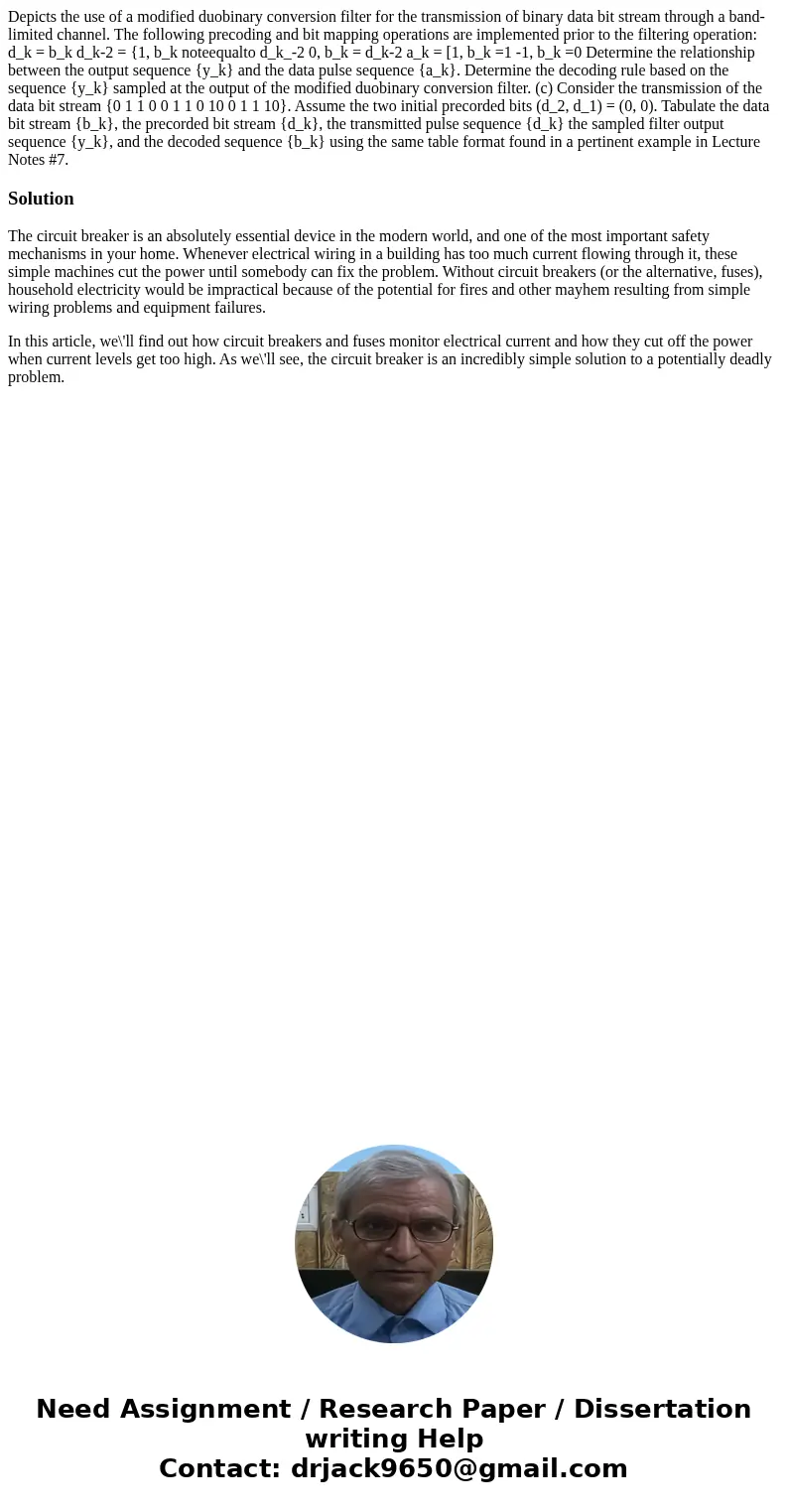Depicts the use of a modified duobinary conversion filter for the transmission of binary data bit stream through a band-limited channel. The following precoding and bit mapping operations are implemented prior to the filtering operation: d_k = b_k d_k-2 = {1, b_k noteequalto d_k_-2 0, b_k = d_k-2 a_k = [1, b_k =1 -1, b_k =0 Determine the relationship between the output sequence {y_k} and the data pulse sequence {a_k}. Determine the decoding rule based on the sequence {y_k} sampled at the output of the modified duobinary conversion filter. (c) Consider the transmission of the data bit stream {0 1 1 0 0 1 1 0 10 0 1 1 10}. Assume the two initial precorded bits (d_2, d_1) = (0, 0). Tabulate the data bit stream {b_k}, the precorded bit stream {d_k}, the transmitted pulse sequence {d_k} the sampled filter output sequence {y_k}, and the decoded sequence {b_k} using the same table format found in a pertinent example in Lecture Notes #7.
The circuit breaker is an absolutely essential device in the modern world, and one of the most important safety mechanisms in your home. Whenever electrical wiring in a building has too much current flowing through it, these simple machines cut the power until somebody can fix the problem. Without circuit breakers (or the alternative, fuses), household electricity would be impractical because of the potential for fires and other mayhem resulting from simple wiring problems and equipment failures.
In this article, we\'ll find out how circuit breakers and fuses monitor electrical current and how they cut off the power when current levels get too high. As we\'ll see, the circuit breaker is an incredibly simple solution to a potentially deadly problem.

 Homework Sourse
Homework Sourse